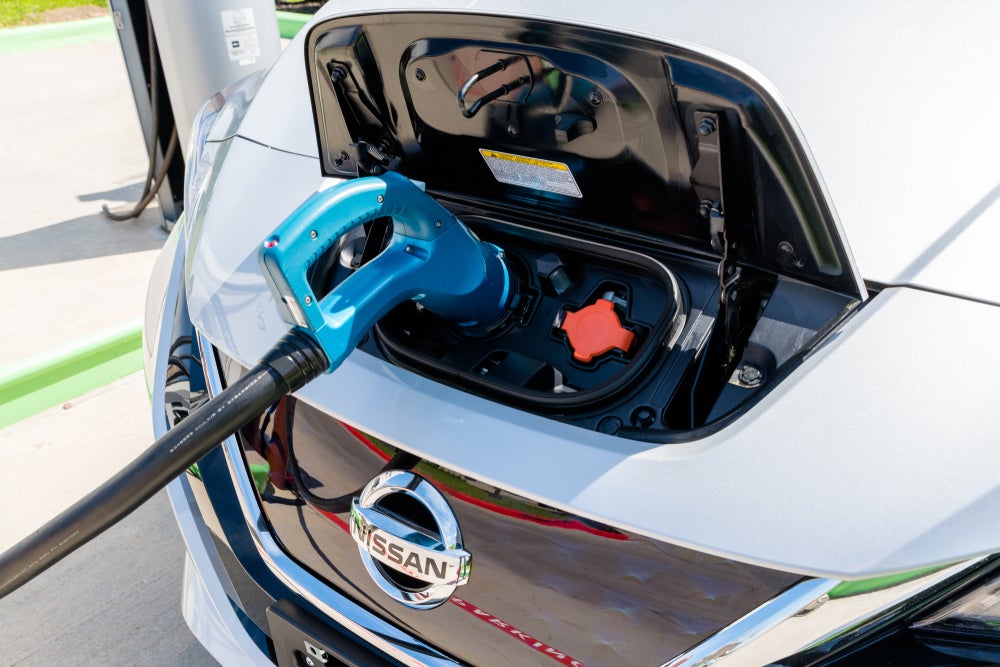
Britain’s Octopus Energy last week launched the country’s first vehicle-to-grid tariff, guaranteeing free charging for electric vehicle owners who sell the power from their cars’ batteries back to the grid during peak hours.
Octopus said that its Octopus Power Pack tariff will save EV owners who drive 10,000 miles (16,093km) per year more than £850 annually.
Vehicle-to-grid (V2G) or bi-directional charging has long been seen as a technology with the potential to help balance power grids by using millions of EVs as batteries on wheels that would provide power back to grids when they need it most.
So far few EV models beyond the Nissan Leaf are capable of bi-directional charging, though other automakers have V2G-ready models coming to market over the next few years.
Octopus said the tariff uses the company’s Kraken tech platform, “charging up the car with cheap, green electricity during off-peak times and exporting back to the grid when it needs it most.”
The company said that participating EV owners need to have their cars plugged in for around six hours a day to return power to the grid and drive less than 12,000 miles per year.

US Tariffs are shifting - will you react or anticipate?
Don’t let policy changes catch you off guard. Stay proactive with real-time data and expert analysis.
By GlobalDataAdam Hall, director at Drax Electric Vehicles, sees a transformative era unfolding as EVs integrate into the energy ecosystem: “We’re in a transformative time where electric vehicles are integrating into our energy ecosystem. In one of National Grid’s Future Energy Scenarios, V2G charging could provide up to 38GW of flexible power from 5.5 million EVs.”
He described EVs as “electric assets” capable of transforming how organisations use energy, especially through V2G technology. In his perspective: “We see EVs as electric assets that can transform how organisations use energy and supercharge sustainability agendas through V2G technology.
Acknowledging the rising demand for power with increased EV adoption, Hall said: “Price volatility creates an opportunity for businesses to profit through optimizing bi-directional V2G charging.”
He envisioned a future where fleets can generate revenue not only during operations but also during downtime, he said: “What V2G offers, in principle, is the opportunity for fleets to generate revenue in their downtime, too.”
While bi-directional charge points are currently limited, Hall anticipates a shift, stating: “Currently, bi-directional charge points are available, but they’re not yet at a sufficient scale or an appropriate price to be viable.” However, he was confident that V2G technology would become more affordable, putting organisations with EV fleets in a key position to benefit.

How does bi-directional technology work?
For effective bi-directional charging, both the EV’s onboard system and the EV charger must be equipped with bi-directional converters, ensuring compatibility between the two components.
The bi-directional converter plays a pivotal role by converting the EV’s energy from direct current (DC) to alternating current (AC). This conversion facilitates the safe transfer of energy back to another energy-receiving entity. The most prevalent application of bi-directional charging is found in Vehicle-to-Grid (V2G) technology, allowing EV owners to leverage this capability by returning excess energy to the grid and potentially earning income.
A key advantage of bi-directional charging lies in its contribution to grid balancing, a process that ensures a consistent equilibrium between energy supply and demand. During periods of low demand, the EV can draw energy from the grid, storing it for later use during high-demand periods when conventional energy sources and the grid are under heavier utilisation.
In essence, bi-directional charging not only enhances the flexibility and efficiency of energy usage in EVs but also actively engages them in supporting the stability and balance of the broader energy grid.
Limited availability of affordable compact EVs in Europe: report



